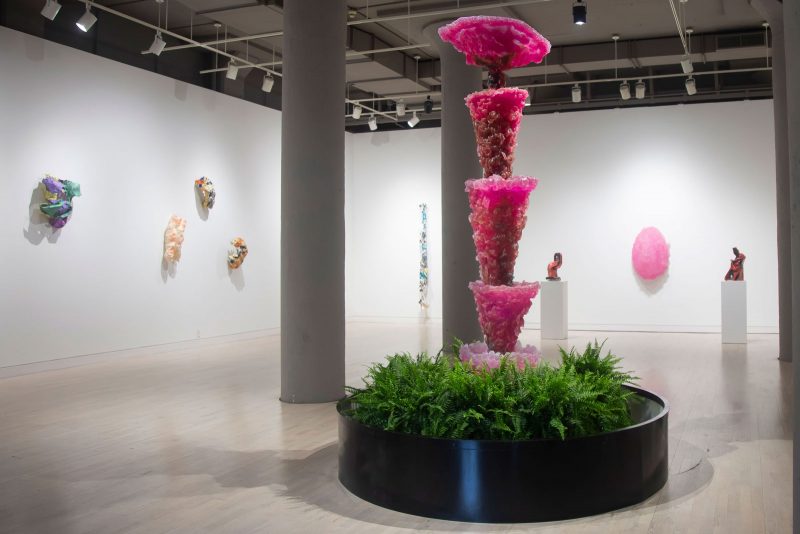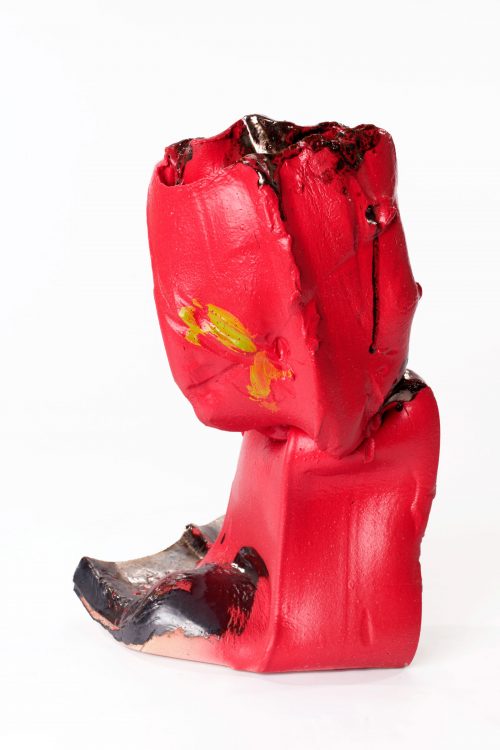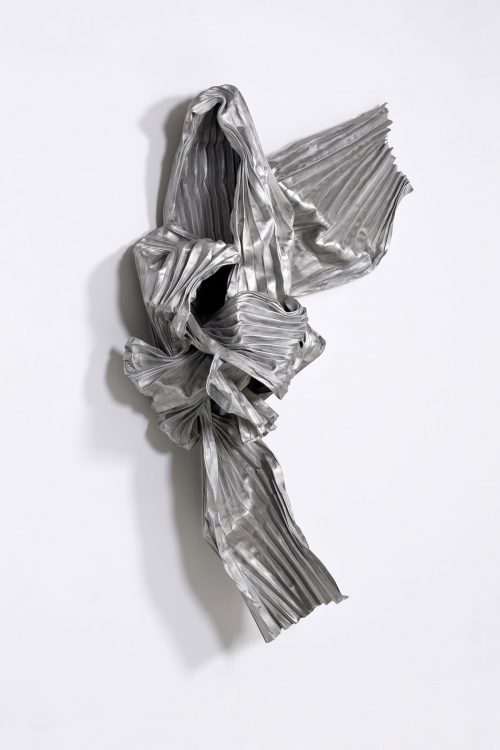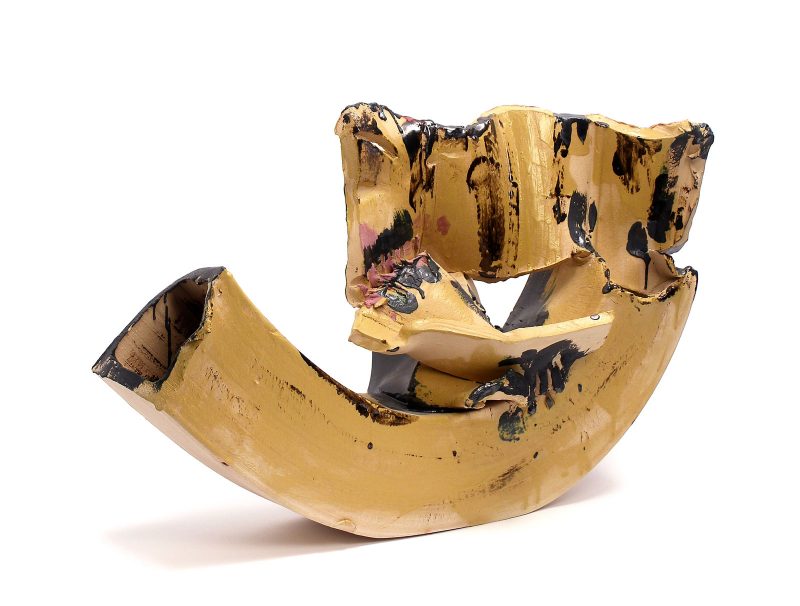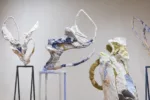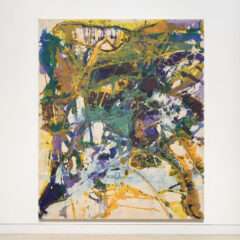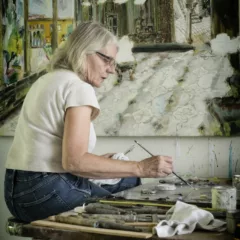For many, Lynda Benglis’s artwork evokes images of female sexual empowerment. In the course of her long career, Benglis’s demand for parity from the art world engendered both the ire of art critics for her self-promoting practices in the 1970s and praise for her adroit video art that is a model for art made about sexuality and gendered roles. Yet bookending these works are her sculptures—abstract forms that question the divide between painting and sculpture; born of sexual politics and the body as referent.
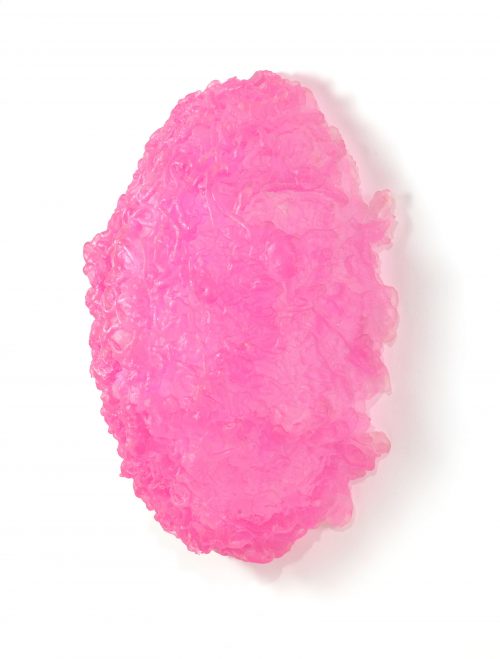
At Locks Gallery, Lynda Benglis’s show Over Air, with an aura of a retrospective, features works made between 1984 and 2017. The a majority of the show is made up of the artist’s recent works, a series of paper and chicken wire dematerializations that are at times vexing and perplexing. The exhibition is laid out somewhat chronologically with “Pink Lady (for Asha)” (2013), one of a series of fountains (sans water), placed in the center. However, this work is upstaged, perhaps because it is non-functioning, by another work made of the same material. The hot pink, tinted polyurethane “Swinburne Egg 1” (2009) stands out for its eye-catching organic shape, textured surface and its artificial color. Hung like a beacon on the far wall of the gallery, as with many of Benglis’s works, “Swinburne Egg” is a metaphor for the what ideas bear in art. Here the reference is the English poet Algernon Charles Swinburne (1837-1909), known for writing on forbidden subjects, and who like Benglis, challenged the social mores of his time.
The presence of her older works helps contextualize her current sculptural practice. Megisti II (1984)—the name of the smallest island in the Greek Dodecanese, which ironically also means biggest—reminds viewers that Benglis’s works can be aggressive and graceful. The folded pleats of bronze mesh and aluminum, appear random and predetermined, both twisting and static. More recent ceramic works, like “Chitimacha” (2013) and “Tangipahoa B” (2013), reference Louisiana, specifically the native Chitimacha people, who now reside in St. Mary’s Parish, and the Parish of Tangipahoa respectively. These works embody Benglis’s brutal elegance. They are violent and languid; formed to be destroyed.
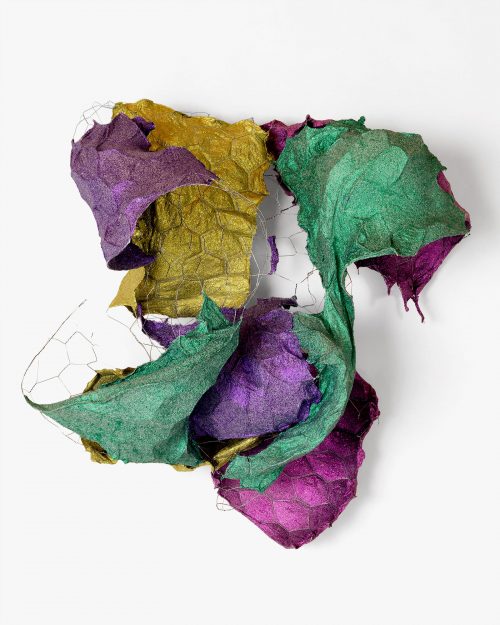
Benglis’s newer works are also aggressive, but rather sweet: made of colorful handmade paper over chicken wire armatures, they show the power and frailty of the body. The sparkling “Madame Butterfly” (2017) with its ephemeral construction, whimsically powerful, asserts the sexual body, adorned yet dismantled. The newer works are a mix of messy, ad hoc, easy applications, hung with wires and nails showing, nonetheless they each recall the power of the shroud and the glamor of the costume.
What is to be gotten through abstraction in a world in which most ideas have been twisted out of shape? Benglis’s work has been, for most of her career, a series of provocations, in that her works were made as a counterpoint to a male dominated field of sculpture. She has pressed and twisted shapes into forms that accentuate and focus our attention on the transgressive nature of sculpture itself and moreover those made by women. Her forms reflect beauty and the uncanny; the spaces between; and the moments after. Her works are documents of making, in the squish or bend of clay, the turn or folding of chicken wire, paper and cloth.
In the history of art making women have been subject and object, and when women have asserted their subjectivity they have too been subjected to objectification and diminishment. Benglis’s work approaches this condition from the perspective of shape and form. Substance. Bringing all that murky stuff onto the surface and creating forms that are the embodiment of the difficult jujitsu that women often have to perform to make it as artists and be part of a system that is stacked against us. Broken yet beautiful Over Air is a breath of fresh air and a long exhale of trauma and trouble.
Lynda Benglis “Over Air” at Locks Gallery, May 3 to June 28, 2019.
More Photos
